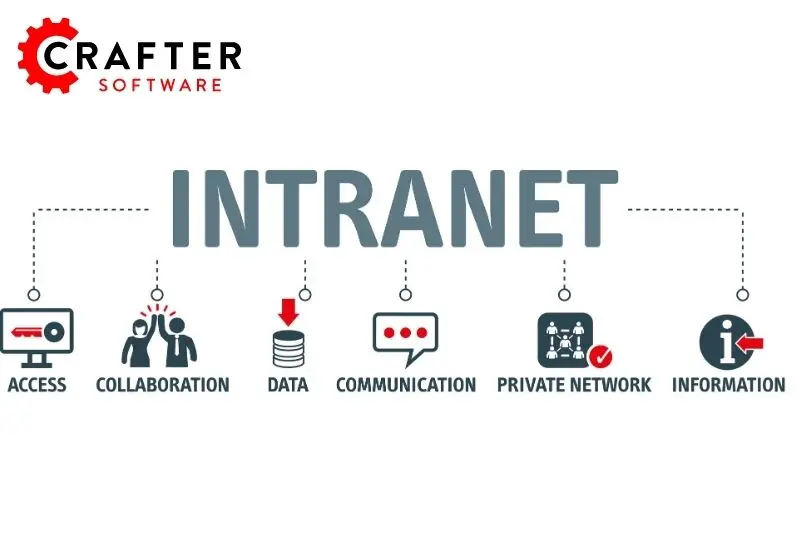What Is an Intranet?

Sara Williams

The digital workplace concept was utterly altered in the year 2020 as remote work accelerated across several sectors. The shift won't be temporary either as according to Gartner Trends, almost 50% of employees will continue working remotely in the future. Consequently, many organizations have had to change how they view internal communication and adapt to these new trends to facilitate this movement.
Traditionally, a crucial aspect of internal communication in any enterprise business has been the intranet. Yet many intranets have been neglected in favor of other solutions over the years.
However, according to Forrester, the intranet is seeing a resurgence to suit the current digital environment. This begs the question, is the traditional intranet model still relevant in 2021 and beyond, or does there need to be another alternative?
In this article, we'll delve into those details and explain how a headless CMS could provide the flexibility required for the future of the intranet.
The Definition of an Intranet (Differences Between Intranet, Internet and Extranet)
An intranet is a private network for members of an organization that is used for internal communication and collaboration.
The intranet is frequently confused with the internet, but it is a private network, unlike the internet, which is public. An extension of an intranet is known as an extranet, which is simply an intranet that includes authorized access for vendors, suppliers and other business partners.
But where did the concept of the intranet originate? And how has it changed today?
The Intranets of Old
The earliest intranets from the 90s were text-heavy welcome pages that provided basic information about a company. Soon after, they began to evolve to include more features such as messaging and document sharing that fostered collaboration and communication.
As intranets garnered more adoption, they then adopted many of the similarities of social networks, including the support for user profiles and instant messaging services.
Why Would a Company Use an Intranet? (Intranet Benefits)
There are several advantages to using an intranet and these are many of the reasons why the solution has remained relevant over the years. A company may choose to use an intranet to:
- Improve Collaboration: Intranets enable cross-functional collaboration between departments. With a centralized solution for everyone within a company to interact with each other, intranets provide a location that facilitates easier internal messaging. They also provide an avenue for integrating external resources such as freelancers or part-time contractors to find everything and everyone they require access to.
- Boost the Employee Experience: Intranets can be used to keep employees engaged by providing an opportunity for them to build relationships and get answers to specific questions. They also make the onboarding process much easier and facilitate internal mentoring and feedback as well as a way to network within the company.
- Centralized Enterprise Content: In keeping with some of their initial use cases, intranets provide a place for document storage and access to a library of digital assets related to the company.
The Modern Intranet: What Does An Intranet Need In 2021?
Intranets can provide several benefits for an organization. But, given the current array of alternative tools that can do the primary job of an intranet in terms of internal communication and document sharing, these benefits aren't enough.
From Traditional to Modern
Previous intranets were either heavyweight portals that required lots of customization and expensive integration, or simple off-the-shelf tools that could only be configured to meet a small portion of the enterprise’s needs, the modern intranet will have to work more as an agile tool that seamlessly fits into an organization and can be easily extended and integrated. This will require brands to redefine what an intranet means to them and the type of solution they search for to meet the requirements.
Traditional intranets had all of the required features for internal communication included. But now, with software solutions like Slack, Box, Zoom, Confluence and more providing specialized versions of what intranets were meant to do, companies don't want, nor do they need those tools built-in.
Going Headless
A better solution is to have a headless CMS powering your intranet, which enables you to build a lean solution without the cost and complexity of heavyweight portals, while remaining agile in order to customize the experience to meet your organization’s needs. While other solutions hard-coded much of what an intranet needed to be, a headless CMS provides the flexibility necessary in today's modern digital landscape.
For most enterprises, it wouldn't make sense to use a tool that duplicates Slack or Confluence. Instead, what is needed is a communications website that can integrate with best-of-breed tools and enterprise security. The modern intranet should be a platform that keeps the flow of information from leadership downwards and between employees.
Improving the Employee Experience with Omnichannel Support
Another benefit of using a headless CMS is that the employee experience is better with a best-of-breed approach, instead of forcing employees to use an all-in-one tool. Other intranet solutions can be a poor use of resources, as they try to duplicate standard communication tools such as Slack.
Rather than trying to fight the most popular tools, it's better to embrace them. Another example can be found through Zoom. A better solution would be to record Zoom calls and have them searchable within your intranet's content repository, rather than try to replace Zoom.
Read More: THE ROLE OF HEADLESS CMS IN ENTERPRISE VIDEO PORTALS FOR EMPLOYEES AND STUDENTS
The best of breed approach enables organizations to create an omnichannel experience for their employees, allowing them to interact within the organization through the channels they're most comfortable with rather than ones they won't use.
Crafter: A Headless CMS For Building the Modern Intranet
A headless CMS provides the flexibility and functionality required for an intranet in 2021 and beyond.
There is no need for another intranet platform that attempts to replace best of breed communication systems, and instead leaves your organization with a piece of underutilized software that fails to adapt to current requirements.
CrafterCMS provides your developers with the tools they need for building digital experience apps such as intranets that facilitate the omnichannel experience that your employees require. With CrafterCMS, developers can quickly build a customized intranet solution that improves collaboration, boosts the employee experience, and enables you to integrate your best-of-breed tools flawlessly.
Thanks to its headless+ features, CrafterCMS also gives HR and other business users a powerful and user-friendly interface to create and manage on-brand experiences that keep employees engaged.
Learn more about how CrafterCMS can help you build the employee experience by downloading our white paper "Building and Optimizing Multi-Channel Digital Experiences".
Related Tags
Related Posts

How Should You Structure a Blog Post So AI Models Actually Cite It?

Amanda Jones

Publishing Content from Crafter Studio to External Systems and Databases

Sara Williams

Websites Are Dead?

Mike Vertal

No-Code Experience Building for Marketers & Designers

Amanda Lee










